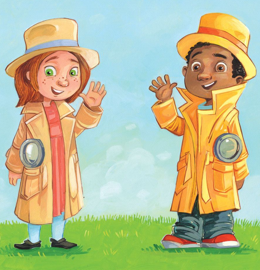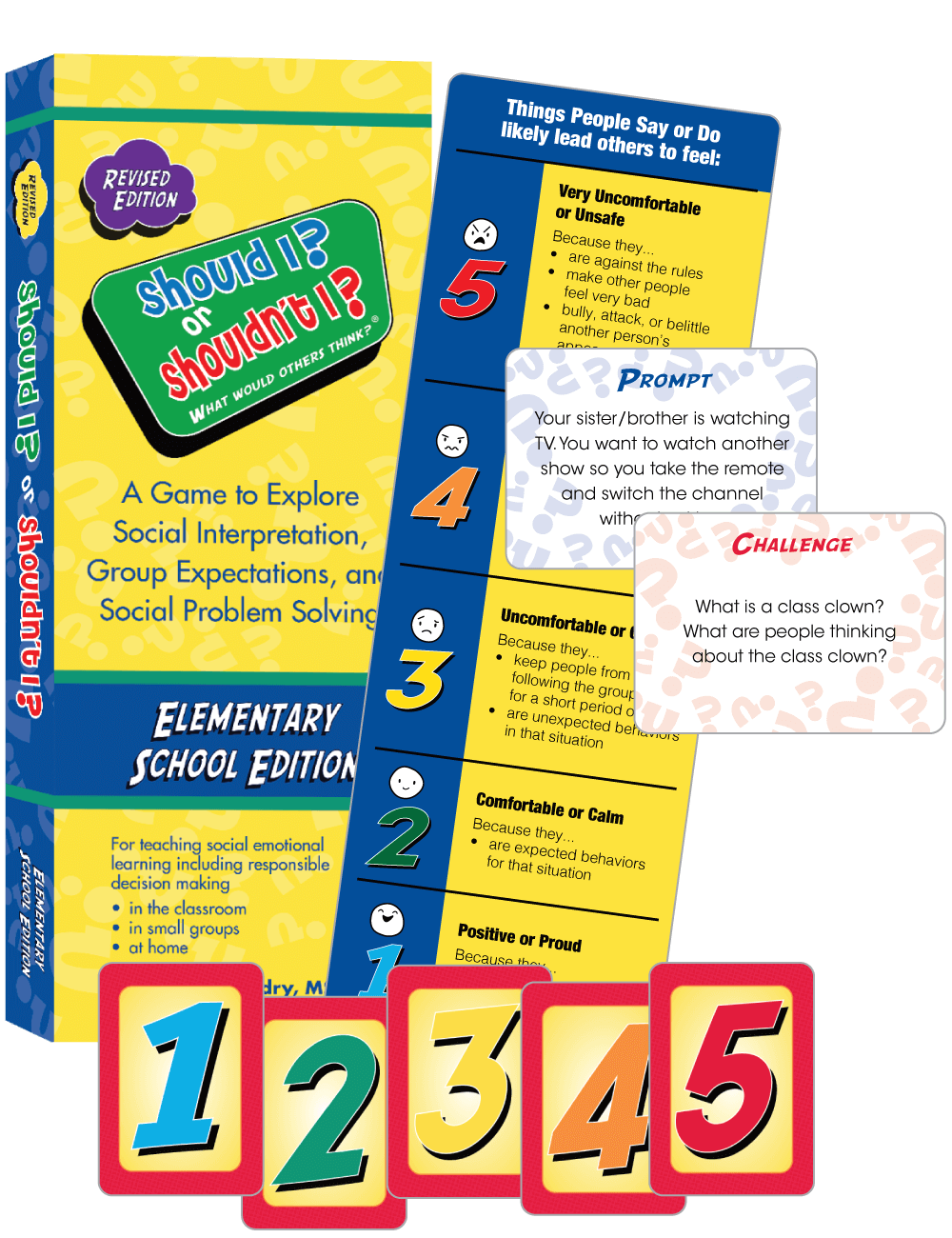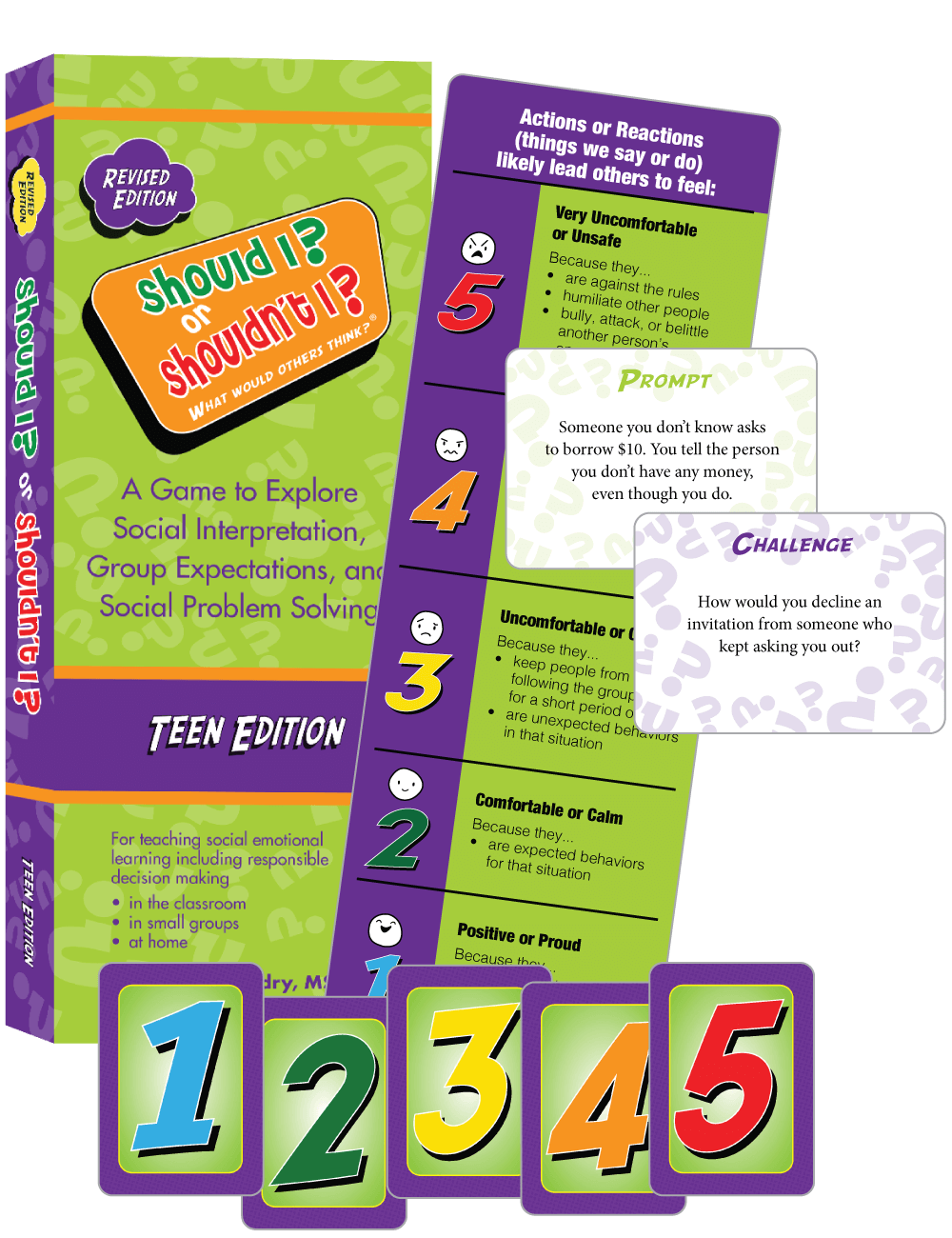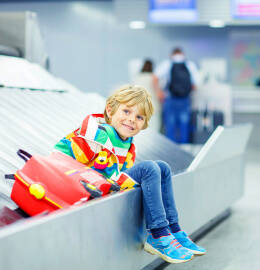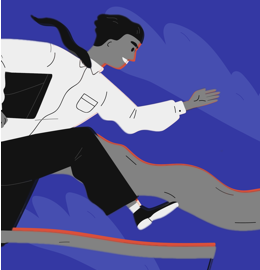Updated: July, 2022
© 2022 Think Social Publishing, Inc.
After a few months traveling worldwide, I’ve experienced first-hand how incredibly important it is to be a “social detective.” Whenever I arrive to a new city, I’ve learned to observe my surroundings, not only to stay safe, but also to figure out the hidden rules and expected behaviors of the unfamiliar environment. At night, I often have dinner with other travelers, and we discuss the cultural customs and behaviors we’ve seen, sharing opinions about which behaviors seem strange to us based on where we come from. As a social cognitive therapist, I quickly realized that we were engaging in the same process of social observation that we teach our students!
Whether on weekend getaways or longer international destinations, traveling is a great time to practice being a Social Detective. Visiting new and unfamiliar places provides countless opportunities for everyone to improve their social observation smarts. The hidden rules of social behavior (i.e., what’s expected in any given situation) change based on time, place, situation, and culture. To figure out the expected behaviors in any environment and situation, we have to think with our eyes and use our social observation smarts.
Note: The concept of being a Social Detective is introduced to elementary-age students in the Social Thinking book, You are a Social Detective, by Michelle Garcia Winner and Pamela Crooke. If your child(ren) is not familiar with these core Social Thinking concepts, it would be helpful to introduce the book prior to leaving on vacation.)
BUT...Why do we have to practice our social thinking when we're on vacation? We're supposed to be relaxing!
- Using our social brain is something we do all day every day. It’s important for children to understand that it’s not a “skill” we turn on/turn off, but something we all do all the time!
By navigating social situations on vacation, you are already using social thinking. The idea behind this article is to help parents recognize how and when they use their Social Detective smarts and strategies, and to share that thinking process with the rest of the family. Why not kill two birds with one stone – have a great vacation and increase social awareness smarts at the same time! - Social observation can be a family activity. The individual with social learning challenges is not singled out this way. Working together builds a sense of collaboration in figuring out the hidden rules together and shows the individual with social learning challenges that social observation is a skill EVERYONE uses.
- Traveling can provide loads of fun and safe opportunities to practice being a Social Detective! Individuals with social learning challenges are often described as having an “invisible disability” since their learning weaknesses are not immediately noticeable. When they make social mistakes at home and in familiar contexts, they are not easily forgiven by their peers. The rules are different on vacation! All travelers are in the same boat, making social errors as they try to figure out the hidden rules of their new environment. Most locals will be forgiving of our social faux pas as they do not expect travelers to know or follow all the culture’s social expectations. As such, it is a great opportunity to practice social observation without the pressure of being expected to already know all the hidden rules!
So… let’s get started!
We’ve developed a few activities to help you get into the groove of talking about social observation with children and other family members. These activities build awareness and provide practice opportunities to learn core social observation skills, such as “think with your eyes”, “being a Social Detective”, and “expected/unexpected.” The idea is to show children the process you use to navigate new social situations and stimulate some interesting discussions around social behavior.
While going through these exercises, keep in mind that age or academic smarts don’t necessarily equate with social smarts. You can decide as a family which activities make sense for you. Individuals with social learning differences and/or challenges may need more direct help and explicit explanations, frequent prompts and reminders, and take longer to grasp the idea of being a Social Detective compared to their neurotypical peers.
First, let’s review some basic Social Thinking Vocabulary language you’ll be using in these activities.
- Social smarts: The type of “smarts” in our brains we use whenever we are around other people. Our social smarts help us figure out our own and others’ thoughts, feelings, and what their words and actions mean. (School smarts are the kind of smarts that help us with math or reading or writing.)
- Thinking with your eyes: Our eyes are like arrows; they give us clues about what other people may be thinking about or are planning to do next. When we think with our eyes, we use our eyes combined with our brain power to look at a situation and the people in it to figure out what they may be thinking about what’s going on in the situation. People also look at our eyes to see what we may be looking at and thinking about.
- Expected: These are things that people do or say that are “expected” for a particular situation. People tend to have more neutral or sometimes positive feelings about expected behaviors.
- Unexpected: Based on a specific situation, these are things people do or say that are unexpected in that situation. They tend to leave the observer with more confused thoughts and feelings.
- Hidden rules: These are the “unspoken” or “unwritten” social rules that often are not routinely discussed by adults or peers but that are expected behaviors in a situation. We are illuminating their importance by naming them “hidden rules.”
- Social Detective: Every one of us is a Social Detective (social observer) when we use our eyes, ears, and brains to figure out what’s going on in a situation, what others may be thinking or feeling, or what they are planning to do next.
- Smart guess: A smart guess means the same thing as an educated guess, however the term smart guess can be used with young children to help them learn that they should take what they know, see, hear and/or feel and make a guess.
- Wacky guess: Making a random guess because we have no relevant information that that can help us figure something out. An example of a wacky guess question is “what color is my toothbrush at home?”
- Social Thinker: Using our social brain to actively interpret what’s going on in a situation and with the people in the situation so we can better interpret and respond to the information. We are social thinkers when we try to understand the characters in a book of literature, or in a movie or a person in history. We are social thinkers any time we are interpreting people we encounter through media, text, on the radio, or in a face-to-face interaction. Being a social thinker helps us problem solve and think critically about what we are experiencing.
EXERCISE 1: Take turns sharing observations about the situation and what is going on.
Before entering a new situation, stand to the side for a few minutes to observe and then discuss what you see. You can start by reading the explicitly written rules on posted signs and discuss how things are organized in space. Then, you can observe what people are doing. This is how you start being a Social Detective!
For this exercise, there is no need to label expected/unexpected behaviors for the situation or talk about hidden rules. This is simply a chance for everyone in the family to share what they notice about the situation, what they see people doing, and what they hear people talking about.
Sample Situation: AIRPORT
Adult: Wow, this airport is really crowded! I see a bunch of people moving over to the right next to the exit sign, maybe they’re ready to leave the airport. Where else do you see people going?
Child: There’s also a group of people heading over to the left. They might be going to the bookstore to get some magazines and snacks before their flight.
Adult: I also noticed people standing by that board. I bet they’re trying to figure out which gate to go to. Which way should we go to use the restroom?
Sample Situation: RESTAURANT
Adult: This restaurant is hectic! There seems to be crowds of people everywhere and I can’t quite tell what you’re supposed to do here. What do you see?
Teen: Most people walking in go straight to the front counter; it seems like they order there… But they aren’t waiting in line, they are pushing their way up to the front.
Adult: But can you tell where they pay? I see money on the tables too.
Teen: It looks like they are handing money to the person at the counter, so maybe the table on the money is tip for the servers when they bring the food. I guess we have to tip in this country.
EXERCISE 2: Do you notice anything that is confusing or makes you feel uncomfortable?
In this discussion, you can start to share your opinions and make social judgments about the behaviors you see. The goal of this activity is to help your child or teen become more aware of their own social self-awareness. In other words, we all have social expectations of the people around us, and we might feel uncomfortable or even upset if these expectations are not met. It is common to feel uncomfortable when the social expectations of a situation do not happen.
As part of this discussion, you can also make decisions about what you will do and whether you feel comfortable in uncomfortable situations by following some of the new hidden rules you are noticing in this new place. Sometimes you may not feel comfortable with the expected behaviors in another country. This is a great opportunity to talk to teens about ownership and accountability by giving them the choice to decide whether or not to adapt their behavior to match the situation at hand. As teens and adults, it is often difficult to make the choice between trying a new set of behaviors that are expected for that country/situation or staying in our comfort zones and sticking to the behaviors we are familiar with.
Sample Situation: Expected behaviors can make you slightly uncomfortable
When traveling in Buenos Aires, Argentina, I saw that everyone was greeting each other with a kiss on the cheek. Although this makes me a little uncomfortable to me, I noticed clues that everyone else seemed fine with this behavior (e.g., the majority of people were doing this, everyone was smiling with relaxed body language). Thus, I could make a smart guess and figure out that the expected behavior is to kiss people on the cheek when you greet them; this makes the local people feel neutral or okay. Even though this makes me a little uncomfortable, when I am in Argentina, I will follow the hidden rules and accept people kissing me on the cheek and I will try and kiss others on the cheek when I greet them.
Sample Situation: Expected behaviors that initially seem confusing
When in Thailand, I noticed that everyone stood up before a movie started in the theatre. I found this a bit confusing because we don’t do this in the USA. But since we noticed everyone was doing it, we asked and found out that it is their custom to acknowledge their king prior to the movie starting. That means the expected behavior for that situation was to stand up before a movie began playing in a theatre. This makes the local people feel good or okay or neutral since it’s just something they do. Once I understood why people were standing, I also felt okay or comfortable doing the same.
Note: Keep in mind these are examples from our own personal experiences traveling as adults. The goal of this exercise is to make social observations, not to blend in. Even when a child or teen can identify and explain the hidden rules of a new situation, we wouldn’t necessarily expect them to readily be able to step outside their comfort zone and adapt their behavior to match the social situation.
EXERCISE 3: I Spy: Can you tell who the tourists are and who the locals are?
This is a fun activity to discuss the hidden rules around being a tourist. This exercise also incorporates the ability to make smart guesses, as everyone will put the clues together to guess whether the person is a tourist or a local. Hint: There is no need to reach a consensus; the purpose of this exercise is to experience the process of sharing clues to make a smart guess.
Sample Situation: Standing on the street
Adult: I think he’s a tourist because he’s taking so many photos.
Teen: Nah, I think he’s a local because he’s speaking the local language fluently… He also seems to know many of the people on the street.
Adult: Hmm… that’s true too. Those are good observations, so it’s possible he’s a tourist or a local… I guess we will never know for sure!
HELPFUL SUGGESTIONS:
Here are some general tips to keep in mind about being a Social Detective:
Tip 1: Acknowledge everyone’s thoughts. Try to be neutral in your observations and just describe what you see. You and your child, or other family members, might see the same situation in a different way. That’s perspective taking!
As you move to exercises 2 and 3 and begin to share your social judgments and make smart guesses, you may find that everyone has different opinions. Make sure to validate everyone’s thoughts and feelings. Sometimes, it may be tempting to correct your child’s opinion (e.g., “I think you’re wrong; he’s definitely a tourist!”). Instead, try to acknowledge his/her opinion while also sharing your own thoughts.
Tip 2: Be sneaky – use quiet voices and avoid pointing. Instead of pointing, use language to describe what you’re looking at. “See the man wearing the flower-patterned shirt next to the tree?” For younger kids, you can talk about how detectives are subtle when they collect clues!
Tip 3: Observe both expected and unexpected behaviors. The unexpected behaviors of any given social situation are often more obvious than the expected behaviors. If your child or teen is only noticing unexpected behaviors, you can point out some of the less noticeable expected behaviors for that situation. In that way, you can shift your child's attention toward the hidden rules (i.e., expected behaviors) of the social situation.
Sample Situation: Beach
Child: I see a child having a tantrum by the popsicle stand.
Adult: I see a group of kids putting on their snorkels and getting ready to swim!
Tip 4: Use photos. If it’s difficult for your child to make social observations in real-time, you might also consider taking pictures throughout the day and then doing these exercises after the situation has ended. Using the camera on a smartphone or a digital camera gives you quick access to the photos you’ve taken.
You may be pleasantly surprised to see what your child or teen is noticing during these discussions. It’s a great opportunity to get insight into how your child sees the world, which is crucial to filling in the gaps in their social observations. Individuals with social learning differences and/or challenges are often told that their social observations are “wrong” so they may initially be hesitant to share what they’re thinking. But once they start to open up, it is often fascinating to see the things they notice, and you will probably learn from them as well!
Remember: The goal of these exercises is to increase social awareness, not to push for or expect behavior change. That is usually and not really the point. Teaching about social thinking (thinking socially) is a slow and deep learning process, and building social awareness is one of the first steps to long-term behavior change. Use the following questions to help guide your observations.
Being a Social Detective Means Looking for Clues!
The following list of general questions is intended as a guide, to use to stimulate discussions as you start exploring social observation with your child or teen. Be sure to add in others that are relevant to the situation you are observing. You do not need to go through the list question by question! It is better to follow the interest level of the group and the flow of the conversation. For example, if everyone is curious about the dress code, you can spend the entire discussion talking about appearance.
Exercise 1: Questions to stimulate discussions about social observations
- Are there signs posted (e.g., stop sign, numbered queues)?
- Do you see any boards with rules, guidelines, or tips?
Personal space
- Are people very close together or far apart?
- Can you figure out, based on how people are moving, if they are going anywhere specific (e.g., to a car, a crosswalk, a restaurant, a store)?
- Are people avoiding certain areas?
Appearance
- What are people wearing? Do they look casual or dressed up?
- Are people dressed to blend into the public or stand out as unique?
Behavior
- How are people greeting each other (e.g., shake hands, hug, kiss on the cheek)?
- Do people look friendly and approachable? Bored? Serious?
- Are people talking to each other or is everyone using their phones?
- When they bump into each other, do they move to the right or left? Do you think they are saying “excuse me” in their own language?
- Are people using loud or quiet voices when talking?
- How do people get each other’s attention (e.g., yelling their name, tapping them on the shoulder)?
- Are people bargaining for goods at the markets?
Exercise 2: Questions about expected or unexpected behaviors for the situation
- What are the expected behaviors of the culture you are visiting?
- Which behaviors make you feel confused or uncomfortable, or go against social expectations that you hold of others?
- Are these behaviors violating the social expectations you hold?
- Can you step outside your own comfort zone to try out an expected behavior in this culture or social situation?
- What behaviors do you think we do at home that may make visitors feel confused?
Exercise 3: Making smart guesses about locals versus tourists
- Is anyone wearing clothes that don’t fit in?
- Are people wearing day packs or pulling luggage?
- What behaviors do tourists do that make them seem different from the locals?
- Are people looking at maps?
- Are people taking pictures/selfies?
- Do people look amazed/excited or confused about their surroundings?
- What language are people speaking and how loudly are they talking?
Janie Lai is a social cognitive therapist who worked at the Social Thinking-Steven’s Creek clinic in San Jose, CA. She took a year off to travel and see social thinking in action around the world.









